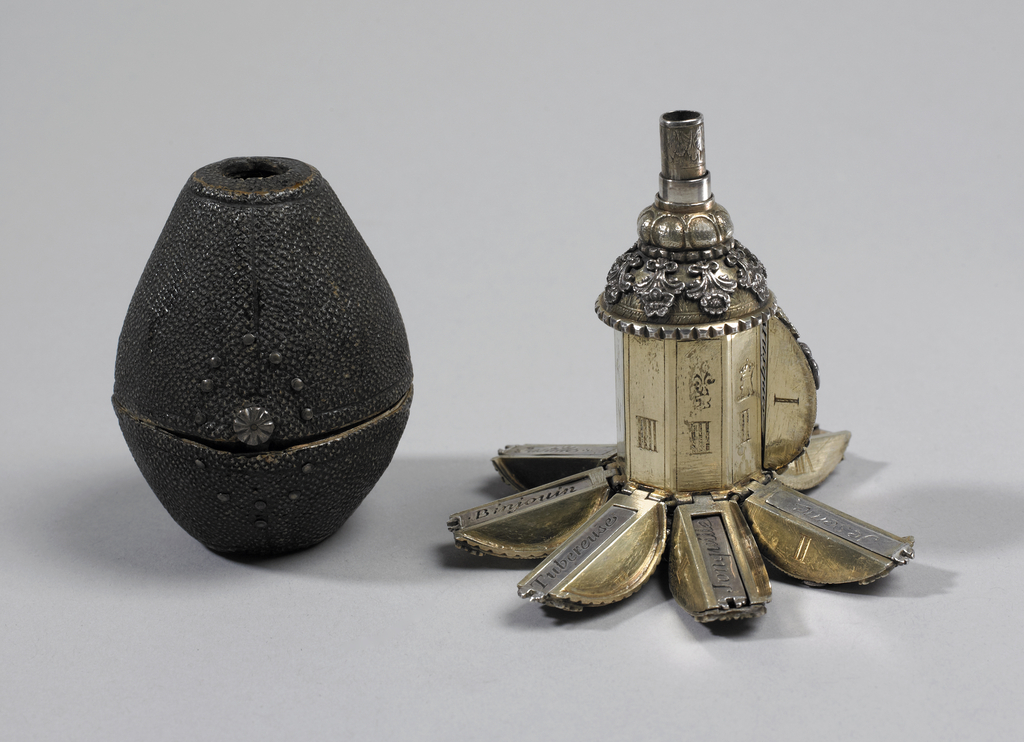It is hard to imagine a time when spices were so precious that their containers were designed as jewelry or a rare accessory. Yet, that is what this pomander is; it’s name is derived from the French, pomum ambrae, referring to perfumes and perfumed ointment.
Initially used for perfumes, pomanders evolved into objects that held rare and exotic spices as well. These spices flavored food, warded off the plague, sanitized and perfumed the air, and had other medicinal values. This pear-shaped example is equipped with its own sharkskin carrying case. Each compartment folds out, like the sections of a pear, and is labeled with the name of a different spice. One of the sections of this pomander was for tuberose, which suggests fragrance as an purpose for the object.
The workmanship is by a top-level goldsmith who would have been commissioned to practice his finest art in honor of both the expensive ingredients that were to be contained within and his client’s status—exotic spices were only within reach of the wealthy. The allegorical and religious scenes on the outside, which draw from both Christian and pagan sources, would all have had relevance to the pomander’s owner. Although this pomander was made in Dijon, the home of French mustard production, it is evidence that the Dijonais added a variety of spices to their feasts.
